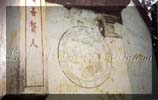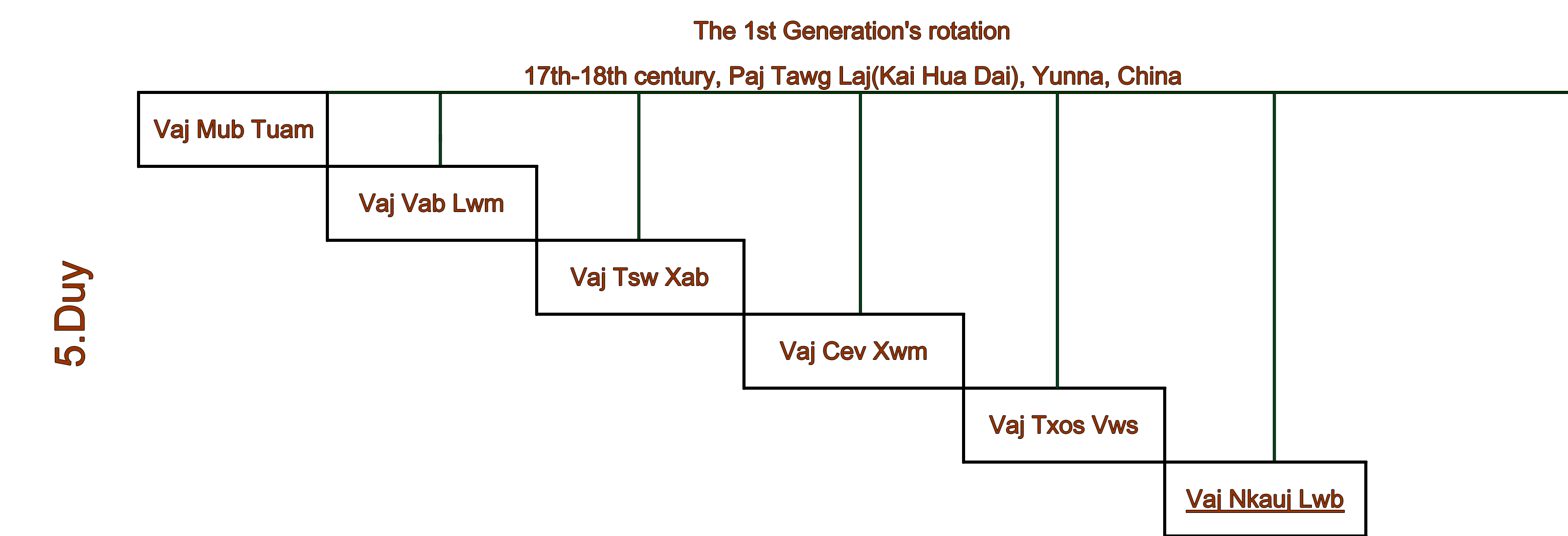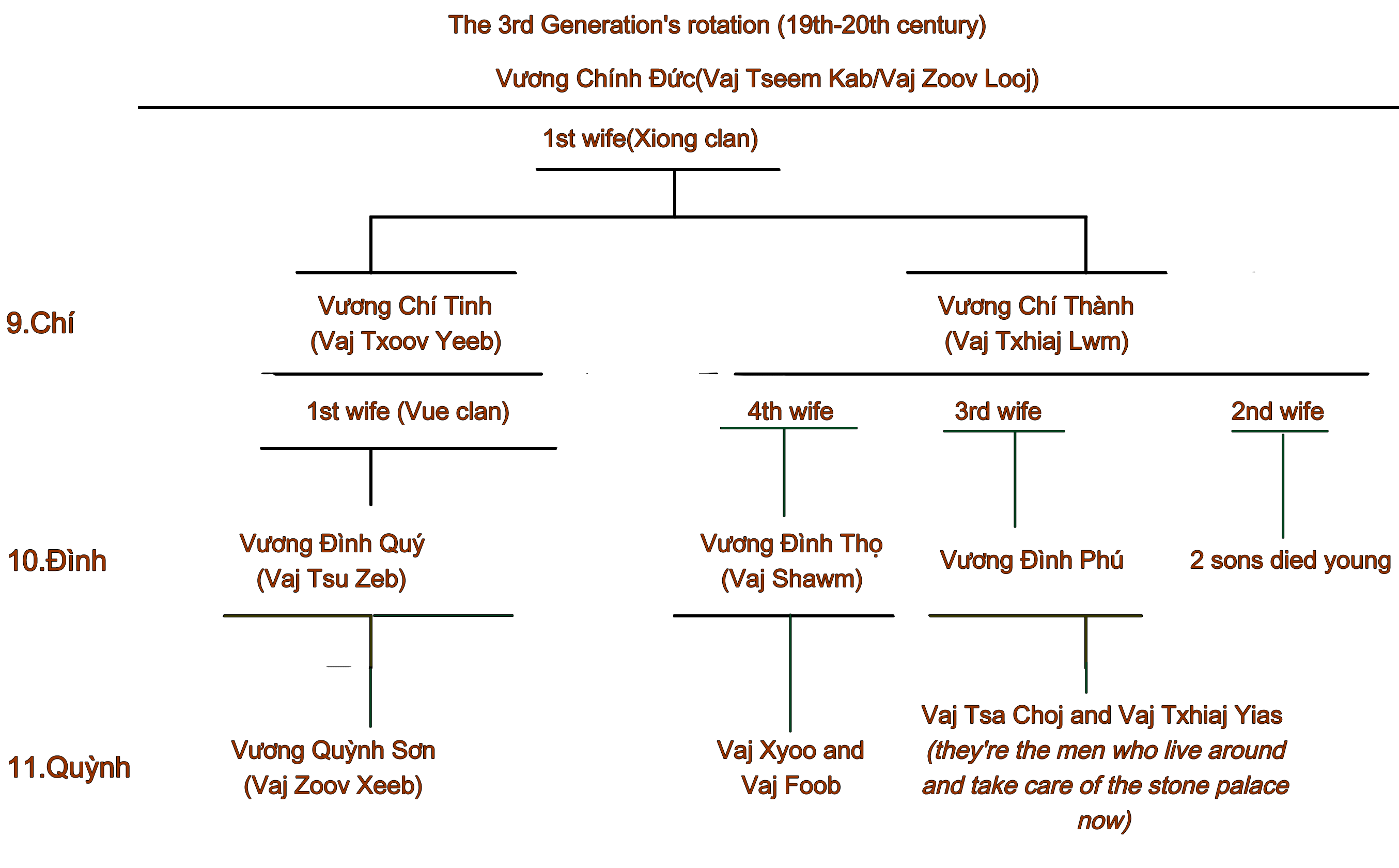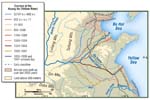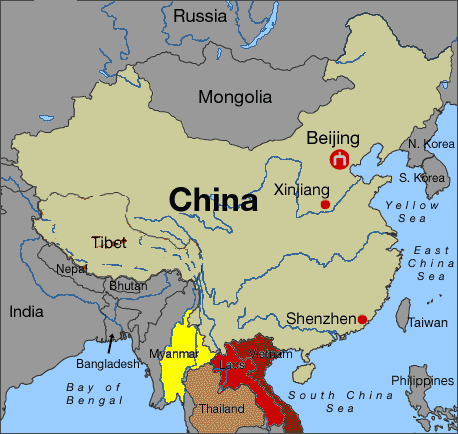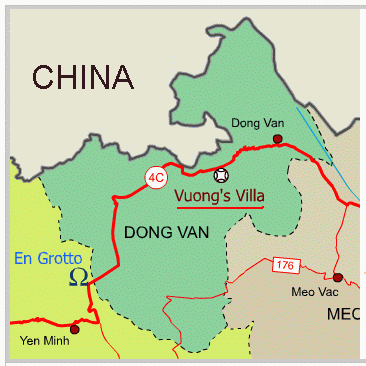- Details
- Category: Demo Info
- Hits: 361
 This map and 2 of the photos from this page are from "Kien Truc Nha Dep" (Fine Architecture) Magazin, Jan/2002.
This map and 2 of the photos from this page are from "Kien Truc Nha Dep" (Fine Architecture) Magazin, Jan/2002.
 Over this rocky mountain where Vaj Zoov Lung's tomb is, every October, these triangle-petals flowers bloom all over. It's also used as food (the plants) for the Hmong people here. (a kind of Barley / Buckwheat) (lus Hmoob hu "nchej" ua ncuav ?piam nchej/the clan system's signal)
Over this rocky mountain where Vaj Zoov Lung's tomb is, every October, these triangle-petals flowers bloom all over. It's also used as food (the plants) for the Hmong people here. (a kind of Barley / Buckwheat) (lus Hmoob hu "nchej" ua ncuav ?piam nchej/the clan system's signal)
After finished building the palace in 1906, a Chinese feng-shui teller passed by and exclaimed that the higher Eastern mountains are the Yin, represents female of our clan, while the lower Western mountains are the Yang, means male of the clan.
All are said and done, and destiny's choice has proved until nowadays, that most of the men in our clan couldn't live longer or couldn't maintain things, but the women.
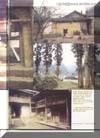 The whole architecture is formed into a "Wang" ( "King") letter The whole architecture is formed into a "Wang" ( "King") letter  , with 3 main houses in a straight line, and 2 rows of houses on 2 sides ("lw ?phas") , with 3 main houses in a straight line, and 2 rows of houses on 2 sides ("lw ?phas") |
 There are 2 battlements. The barbican is approximately 1ft-3" in thickness and about 6ft-5" in height. The 2nd wall is much more thicker and solidified. There are 2 battlements. The barbican is approximately 1ft-3" in thickness and about 6ft-5" in height. The 2nd wall is much more thicker and solidified. |
 Approach the ramp of the house, the main road is made of large, flat, square flagstone. Approach the ramp of the house, the main road is made of large, flat, square flagstone. |
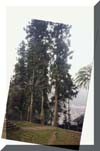 Between the 2 battlements is a large land for over 100-year-old Po-Mu pine trees. Between the 2 battlements is a large land for over 100-year-old Po-Mu pine trees. |
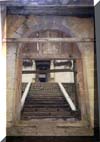 The main palace is straightforward to the battlement's gate. The main palace is straightforward to the battlement's gate. |
A Phoenix on the left and a Dragon on the right; with a pair of parallel sentences: "The Door Respect Righteousness, Heroes Pass-by" // "The House Accumulate Goodness, the Sages Call-on" |
 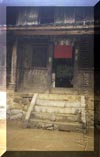 Two other flats are parallel to each other and right-angled with the main one in the front house. All decorations are made of rare wood. Included roofs are Fokieni pine wood. Two other flats are parallel to each other and right-angled with the main one in the front house. All decorations are made of rare wood. Included roofs are Fokieni pine wood. |
  There's a big water pool, used to contain enough water for house members and troops. Back in the days, when the jungles are full of trees, this pool is never empty. There's a big water pool, used to contain enough water for house members and troops. Back in the days, when the jungles are full of trees, this pool is never empty. |
Years have gone by, and our stone palace needs an upgrade. 2004, the Vietnamese government started to restore it to its old form. This is a project of approximately one million dollars.
All our family members (those who have lived there ever since are descendants of the second and third wives of Vaj Zoov Looj, while descendants of the first wife live out of town and overseas) have moved out for the house's reconstruction. Now they have their own houses next to the palace so that they can take care of it and give guides to tourists.
(These photos were taken in 2002 by Lig Vaj, before the full restoration)
- Details
- Category: Demo Info
- Hits: 361
1. Vương Chính Đức(Vaj Zoo Looj)
 1923, under the reign of The Nguyen, Khai Dinh The 13th, Vương Chính Đức(Vaj Zoov Looj) was given this uniform by the king, along with the title "Bang tá", the head governor of a border/mountainous area, to help the king governing the whole Đồng Văn(Tooj Peeb) area then.
1923, under the reign of The Nguyen, Khai Dinh The 13th, Vương Chính Đức(Vaj Zoov Looj) was given this uniform by the king, along with the title "Bang tá", the head governor of a border/mountainous area, to help the king governing the whole Đồng Văn(Tooj Peeb) area then.
They are Quản Bạ(550 sqr. Km), Yên Minh(782 sqr. Km), Đồng Văn(446 sqr. Kme), and Mèo Vạc(573 sqr. Km). Since then, all local people have called him with the name "Vua Mèo" (means Miao/Hmong King); this name was passed along to call his younger son Vương Chí Thành(Vaj Txhiaj Lwm), too.
Gradually, the name "Vua Mèo" became well known to Vietnamese people in the North, especially in Hà Nội, due to the respectful treatment under Hồ Chí Minh's government.  Along with the uniform, the king also honored him with a Lacquered Board with the writing"Feng Ke Zheng Bian", which means "Rightful honor to the border government" (Hán Việt: Phong Khả Chính Biên/Biên Chính Khả Phong).
Along with the uniform, the king also honored him with a Lacquered Board with the writing"Feng Ke Zheng Bian", which means "Rightful honor to the border government" (Hán Việt: Phong Khả Chính Biên/Biên Chính Khả Phong).
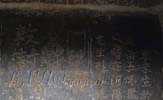
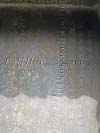 He was given an honor medal by the Laos King. When Vương Chính Đức(Vaj Zoo Looj) passed away, this medal was also carved on his tombstone along with The Legion of Honor in recognition of his life's achievement.
He was given an honor medal by the Laos King. When Vương Chính Đức(Vaj Zoo Looj) passed away, this medal was also carved on his tombstone along with The Legion of Honor in recognition of his life's achievement.
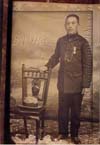 1940's-la Légion d'honneur - given to Vuong Chinh Duc by the French government's representative, for his role as a governor and a leader of the Hmong people who involved and played an important role in resolving conflicts and matters between the local people and the French colonial governing system at the area.
1940's-la Légion d'honneur - given to Vuong Chinh Duc by the French government's representative, for his role as a governor and a leader of the Hmong people who involved and played an important role in resolving conflicts and matters between the local people and the French colonial governing system at the area.
2. Vương Chí Sình or Vương Chí Thành(Vaj Txhiaj Lwm), younger son of Vương Chính Đức(Vaj Zoov Looj)
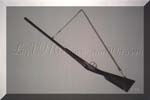 A two-barrel hunting Gun was given to Vương Chí Thành (Vaj Txhiaj Lwm), on behalf of our Vang clan, by the French Indochina government's representative (Colonel - Quan Năm).
A two-barrel hunting Gun was given to Vương Chí Thành (Vaj Txhiaj Lwm), on behalf of our Vang clan, by the French Indochina government's representative (Colonel - Quan Năm).
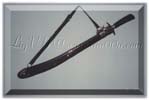 A Sword was given to Vương Chí Thành (Vaj Txhiaj Lwm), on behalf of our Vang clan, by Hồ Chí Minh (President of the Democratic Republic of Vietnam term 1945-1969). The sword is carved with eight Chinese words, which means "Redeeming and loyal to the country, denial to slavery" (Tận trung báo quốc, bất thụ nô lệ). Vương Chí Thành(Vá Txhiaj Lwm) was a member of the first(1946-1960) and second term(1960-1964) of the National Assembly of Vietnam. Hồ Chí Minh also made Vương Chí Thành his sworn brother. The name "Thành" was after Hồ Chí Minh nick name"Nguyễn Tất Thành".
A Sword was given to Vương Chí Thành (Vaj Txhiaj Lwm), on behalf of our Vang clan, by Hồ Chí Minh (President of the Democratic Republic of Vietnam term 1945-1969). The sword is carved with eight Chinese words, which means "Redeeming and loyal to the country, denial to slavery" (Tận trung báo quốc, bất thụ nô lệ). Vương Chí Thành(Vá Txhiaj Lwm) was a member of the first(1946-1960) and second term(1960-1964) of the National Assembly of Vietnam. Hồ Chí Minh also made Vương Chí Thành his sworn brother. The name "Thành" was after Hồ Chí Minh nick name"Nguyễn Tất Thành".
Vương Chí Thành(Vaj Txhiaj Lwm) was the first president of Đồng Văn(Tooj Peeb) (now it is a district of Hà Giang province) from 1946 until 1960. He was also a member of the Committee for ethnic minorities Affairs from 1960 to 1964.

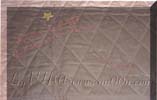 Hồ Chí Minh honored Vương Chí Thành (Vaj Txhiaj Lwm) an army uniform ("áo trấn thủ"). This uniform was a gift to Hồ Chí Minh from the Women's Union of Hải Dương province; he then gave it to Vương Chí Thành, it's embroidered: "Regard to Vương Chí Thành - Member of The National Assembly. Hồ Chí Minh".
Hồ Chí Minh honored Vương Chí Thành (Vaj Txhiaj Lwm) an army uniform ("áo trấn thủ"). This uniform was a gift to Hồ Chí Minh from the Women's Union of Hải Dương province; he then gave it to Vương Chí Thành, it's embroidered: "Regard to Vương Chí Thành - Member of The National Assembly. Hồ Chí Minh".
The gun, sword, and uniform, were passed along to Vương Đình Thọ(Vaj Shawm), the younger son of Vương Chí Thành(Vaj Txhiaj Lwm). When he immigrated to Canada, he left them to Vương Duy Quang(son of Vương Quỳnh Anh, whose original clan name was Yang), and said he would return to have them back. Vương Đình Thọ passed away in Canada without being able to do so.
3. Vương Quỳnh Sơn(Vaj Zoov Xeeb), the first grandson of Vương Chính Đức(Vaj Zoov looj)
From 1971 to 2000, Vương Quỳnh Sơn(Vaj Zoov Xeeb) were given multiple awards and medal by the government of Vietnam, included the First Class of Resistance medal, and a medal for his contribution for the Ethnic Minorities and Mountainous affairs. 2008, before he passed away, given a Third Class Freedom Medal from Vietnamese government.
- Details
- Category: Demo Info
- Hits: 397
Vương Chính Đức(Vaj Zoov Looj)'s parents, and later on, his children and grandchildren, use Hmong, Chinese (both Mandarin and Cantonese), French, and Vietnamese to communicate with each other. The clan middle names were made in a way that fit the languages that they speak and luckily Hmong, Chinese, and Vietnamese are somewhat similar, too. The following translation was dictated by Vương Quỳnh Sơn(Vaj Zoov Xeeb)'s comprehension(he speaks Hmong, Chinese (Mandarin&Cantonese), Vietnamese, and French).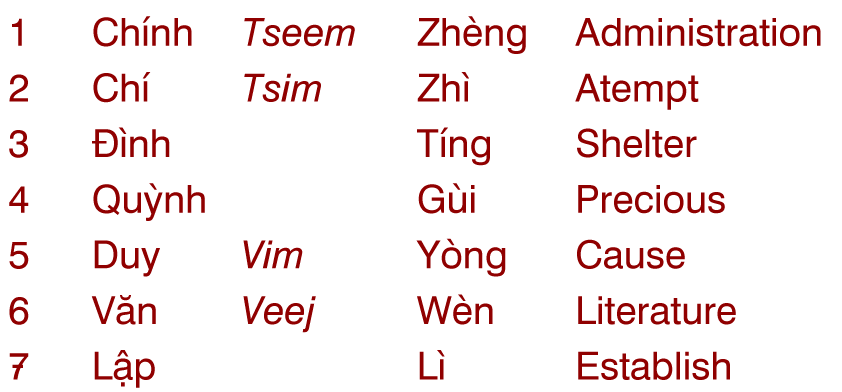
The following names are those individuals from the main branch and of the first wife only. Vương Quỳnh Sơn (Vaj Zoov Xeeb) has one wife. Until 2005, we have approximately 1,000 members who are Vương Chính Đức(Vaj Zoov Looj)'s descendants. The other who are not named here, are those who want privacy or simply, just too many to count (By the time I'm done with one, another one will be born already).
Back in China, at the end of the 17th century, Vương Chính Đức (Vaj Zoov Looj)'s ancestors already had these middle names to distinguish who's from which generation. Hmong people based on a clan system to marry and set up orders, so these middle names help to address each other as "father/uncle" or "son/nephew" and not to marry the backward way or when they don't live in the same region they still know which generation they belong too.
Vaj Txiaj Ntawv, Vương Chính Đức(Vaj Zoov Looj)'s father, as an educated man, kept records of his clan's name and history, along with his other family members who traveled to the border of China and Vietnam, they built their own kingdom on this very place. Vaj Txhiaj Ntawv's tomb is now still in the Bear Cave, Sa Phin district.
The ancestors - the first rotation
The ancestors - the second rotation
The third rotation
The fourth rotation
- Details
- Category: Demo Info
- Hits: 324
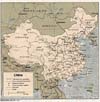 3.000 BC. There were 2 tribes in the Huang He River basin, in China: One’s major was cultivation, and the other was pastured breeding. 3.000 BC. There were 2 tribes in the Huang He River basin, in China: One’s major was cultivation, and the other was pastured breeding. |
| The cultivation tribe based on their major of living, named themselves Miao, written as |
| The breeding tribe is the Han |
The reasons for the Han- Miao wars
| The Miao tribe contended for cultivating grounds, while the Han tribe contended for breeding grounds. This was the original reason for the Han-Miao War in the Huang He River basin, China, lasting for thousands of years in Chinese History. |
| In the very 1st battle of Miao-Han, Xyooj Vwj led the Miao tribe, and Hao Yuan led the Han tribe. In this battle, Hao Yuan and his Han tribes defeated the Miao tribe out of the Huang He River basin, down to the South quote of the Huang He River. |
| Hieu Vien professed himself as emperor, he was the first king of the Han - Han Yan Dì. |
Miao Kingdom time.
| When Xyooj Vwj died, Yaj Lauj continued leading Miao against Han. Yaj Lauj had an adopted son who was a Han; without knowing that this adopted son was an agent. Han thrashed Yaj Lauj and dispersed Miao. The Miao lost their Three Miao kingdom since. |
| After losing the Three Miao kingdom, Han drove Miao to NanLing Shan to isolate and kill all Miao. That’s why Nan Ling Shan was named Miao Ling Shan then. It was a chain of high rocky mountains in the center of Hua Zhong. There where “3 days without sunlight, the ground without 3 even steps”. The Miao couldn’t stand there any longer and was trying to find a way out of Miao Ling Shan. |
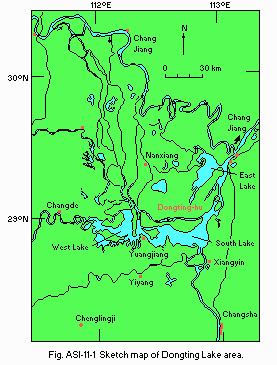 Not until the battlefield was filled with Miao’s bones, the Miao was able to get out of Han’s stranglehold, withdraw to Dong Ting Hu ( Not until the battlefield was filled with Miao’s bones, the Miao was able to get out of Han’s stranglehold, withdraw to Dong Ting Hu ( |
Dong Zhou Time
 Wo Qi headed a troop of 20,000 accessed Dong Ting Hu. The Miao was knocked off, once again, and withdrew deeply to the Hu Nan area, against the Han dynasties. Wo Qi headed a troop of 20,000 accessed Dong Ting Hu. The Miao was knocked off, once again, and withdrew deeply to the Hu Nan area, against the Han dynasties. |
| (Ma Tian Qiu, Ethnic Publishing House, Hu Nan, 1957, written in his book: “...Chang Sha city, Hu Nan’s metropolis, used to be resistant capital of the Miao for many times in the past, in their fighting against Han dynasties...” ) |
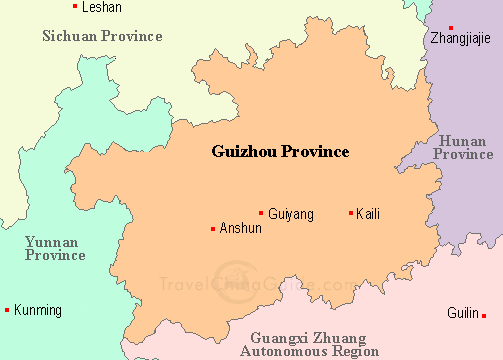 Gradually Hu Nan fell, the Miao receded to GuiZhou, and established Qian nation resisting Han kings. Thence, Gui Yang was the Miao nation’s metropolitan. Gradually Hu Nan fell, the Miao receded to GuiZhou, and established Qian nation resisting Han kings. Thence, Gui Yang was the Miao nation’s metropolitan. |
17th Century (during the Qing Dynasty of China)
| The Qian nation of Miao was exterminated by the Qing Dynasty of China. The last Miao king was Chaj Xaub Mim, killed by the Qing. His grave is located in the center of Gui Yang City, Gui Zhou province now. (China’s government allows all Miao in China to visit King Chaj Xaub Mim every year.) |
the Hmong has been a branch of the Miao nation since this time.
| For the last king Chaj Xaub Mim fell, the Miao has fallen apart since then: |
|
A branch was in West Hu Nan. Some were in Gui Zhou. Some lived along the border of Si Chuan- Yun Nan. Others live on the border of Gui Zhou- Guang Xi. Another lived in the South of Yun Nan. |
| The name Hmong appeared since this separation, objecting to the part of Miao whose name is Hmong. |
Paj Tawg Laj(Kai Huā Dai)
| The branch of Hmong who lived in the South of Yun Nan built a castle named Paj Tawg Laj, which means Blooming Flower Wall, in Chinese is Kai Hua Dai. Here they continued their fighting against the Qing dynasty. |
| In the middle of the Qing dynasty, the Miao was defeated. Qing dynasty occupied Kai Hua Dai and changed its name to Kai Húa Dai, which means Civilized Wall (homonym). |
| Until late of the late Qing dynasty, the Hmong were continuously beset and killed. The 17th century saw the enormous evacuation of the Hmong out of China. Hmong were scattered to nearby Southern China countries: the border of Myanmar and China, the border of Laos – China, the border of Viet Nam – China... |
| Our Hmong Vang was one among all of the Hmong clans who ran out of the slaughter. We use 7 rotational middle names for each generation to count how many times our generation’s repeated Each generation has 25 divisional years. Every 4 generations equals to 100 years. |
| At that time, our forefathers were in the Quynh (Jing) middle name. In that battle, our forefathers died, and there were only their 6 sons alive. All 6 brothers guarded each other on the getaway, the youngest brother was so young that the other brothers had to take him into the back basket (?pob tawb?) on their way fleeing to the North East of Viet Nam, at the border zone of Viet Nam and China. The sixth brother is in the Duy (Vim/Yin) middle name. Our branch is from the youngest brother Vaj Nkauj Lwb. (details on the family tree page) |
Early of 18th Century
| Vaj Txiab Ntawv turned back to Paj Tawg Laj which had now changed to the new name Kai Húa Dai. There he attended Chinese schools. After graduating from China, Vaj Txiab Ntawv came back to Dong Penh, Hu Yang. He worked as an Office Manager for Xyooj Tsw Dag, the Hmong king in Hu Yang at that time.(Xyooj Tsw Dag revolted against the Qing dynasty.) |
| Vaj Txiab Ntawv escaped to Pa Pu Mountain, Ma Li Po, Wen Shan, Yunnan, China. There he got married to a Hmong Lee clan's daughter. Until all things were safe and sound, they turned back to Sa Phin village, and lived in the Bear Cave, deeply in the jungle. |
Vaj Txiab Ntawv’s grave is still in Sa Phin village now, near our stone house. Vaj Txiab Ntawv had 2 sons, Vaj Tsas Pov and Vaj Zoov Looj. Vaj Zoov Looj was born on August 12th, 1865.
|
- Details
- Category: Demo Info
- Hits: 2613
All contents were interviewed and translated by Leah Her (Lig Vaj-grand-daughter) and Vuong Kim Lien (Vuong Thi Sy/Ntxhi Vaj/daughter) from Vuong Quynh Son(Vaj Zoo Xeeb)'s oral recording and written materials.
If you copy, please credit the source!©. Thank you!
If you have any questions, please use the Contact Form. We'll try to get back to you as soon as possible.
Top Stories
Ambassador Osius Bikes Ha Giang Province (2017)
This is a published article on the website of the U.S. Embassy and Consulate in Vietnam.
Ambassador Osius and a delegation from the U.S. Embassy visited Ha Giang province from March 1 – 4 to bicycle and explore the rich cultural, historical, and natural heritage sites...





